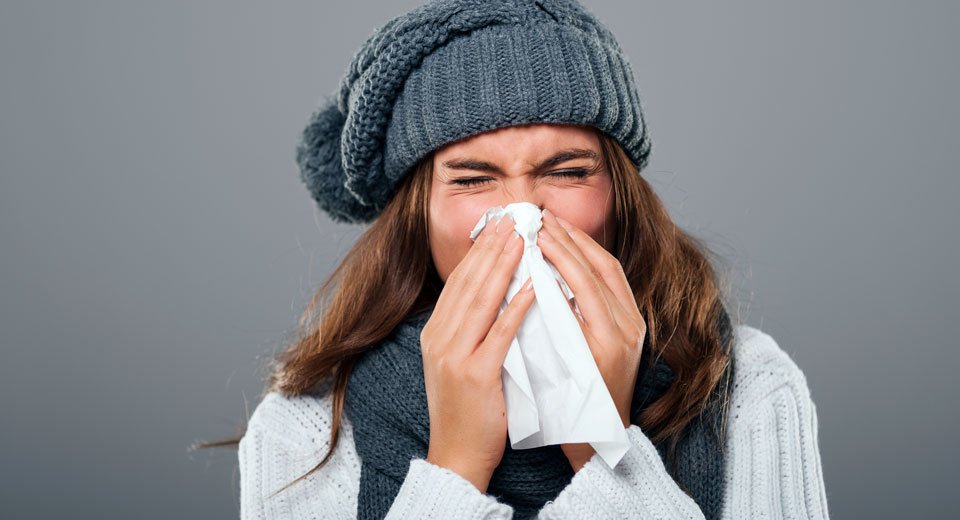Don’t let winter allergies slow you down

Springtime pollen and autumn hay fever may get all the attention, but winter can be just as tough on allergy sufferers.
Allergy season lasts all year long for many people, according to the American College of Allergy, Asthma and Immunology. Sneezing and itchy, watery eyes, and even rashes, are common signs that your body may be reacting to an allergen.
If you’ve been saying, “I’ll just put up with it,” you’ll be surprised at how easy it is to find help for your symptoms. Allergist/immunologist John Johnson, DO, with the Allergy & Asthma Centers of Cape Cod, said there are things you can try right away to keep indoor allergy triggers in your home at bay.
“When we close the windows and seek shelter indoors during the winter, that may trigger or worsen allergy symptoms since our homes will have decreased ventilation or air exchange,” he said.
Of course, anytime you are experiencing new symptoms, it’s smart to check with your doctor or seek the help of a specialist. As many as 50 million people suffer from allergies, but nearly one in four people who have allergy symptoms is not experiencing true immune responses (allergies). Doctors are trained to help you identify the problem and offer relief.
#1 Indoor Trigger
“The number one allergy trigger in the house is dust mites,” said Dr. Johnson.
The best time to plan for dust mite control is when the humidity is higher during the spring, summer and autumn—when dust mites reproduce.
“The best way to control dust mites is by controlling the humidity levels in our homes,” said Dr. Johnson. “When the humidity level is 50 percent or higher, dust mites reproduce like crazy. Running humidifiers can contribute to the problem, especially if we let the humidity levels reach greater than 50 percent. When patients say they turned on their humidifiers and their issues began, usually I can identify the source of their problems as dust mites.”
Dust mites eat dead skin that falls off our bodies and organic debris, such as food particles, that may be floating around our homes. Keeping that in mind, he said that allergists try to attack dust mites in the bedroom because that’s where people spend the most time in one spot - our beds.
In addition to keeping humidity below 50 percent year-round, tips for dealing with dust mites in your home include:
- Choose wooden floors instead of carpet.
- Clean your house with a vacuum that has a HEPA filter.
- Place mite-proof cases on your bed’s mattresses and pillows.
- Wash linens regularly in hot water.
- Install a high-efficiency filter in your HVAC system. The filter should have a MERV (minimum efficiency reporting value) rating of 11 to 13. The higher the MERV rating, the better.
Pet Dander
The second most common household allergy trigger is pet dander, said Dr. Johnson.
“This is toughest on people who have animals with fur. Cats, dogs, guinea pigs and rabbits in the home can worsen allergy symptoms, especially in the winter when the windows are closed,” he said.
He recommends keeping animals out of the bedroom but acknowledges that may be hard for many people. In addition to that (or in lieu of that), he emphasizes the use of a HEPA air filter.
“Put HEPA air filters where you live; don’t count on having one air filter in the basement; take care of the entire house,” said Dr. Johnson. “Place the HEPA filter in an area shared by you and your pet.”
Bathing animals on a regular basis is also very helpful.
Treating Allergy Symptoms
Dr. Johnson, who deals with allergy, asthma and immune weakness-related diseases, said too often, people put off seeking treatment for their allergy symptoms.
“There’s a big movement against ‘presenteeism’ – the phenomenon where employees show up for work but don’t perform at full capacity – in medicine today, and allergies are often what’s keeping them from being as efficient as they would be without the disease.”
He encouraged everyone to avoid presenteeism, understand they don’t just have to put up with allergy symptoms, and seek help.
“Removing triggers where we live and work can help,” Dr. Johnson said.
There are a variety of treatments, he added.
“Patients can try a nose spray. It works really well, but you have to use it every day for it to work. Allergy shots, which have been around since 1911, are the ultimate option. They are disease modifying in that they actually change your immune system. They don’t interact with any medications because they are all natural. Most people tolerate allergy shots really well.”
Cost and time commitments are potential drawbacks for people who need allergy shots, which are given once a week for six months, then once a month for three to five years.
Nose sprays can be purchased over the counter, he said, but it’s best to ask your doctor before starting any treatment.
“I prescribe nose sprays because sometimes insurance and Medicare will pay for them,” Dr. Johnson said.
Allergy sufferers, who may look forward to cold weather for its absence of pollen, may not have the winter respite they were hoping for. But everyone can benefit by knowing home-based triggers for dust mites and dander, and how to control them.
